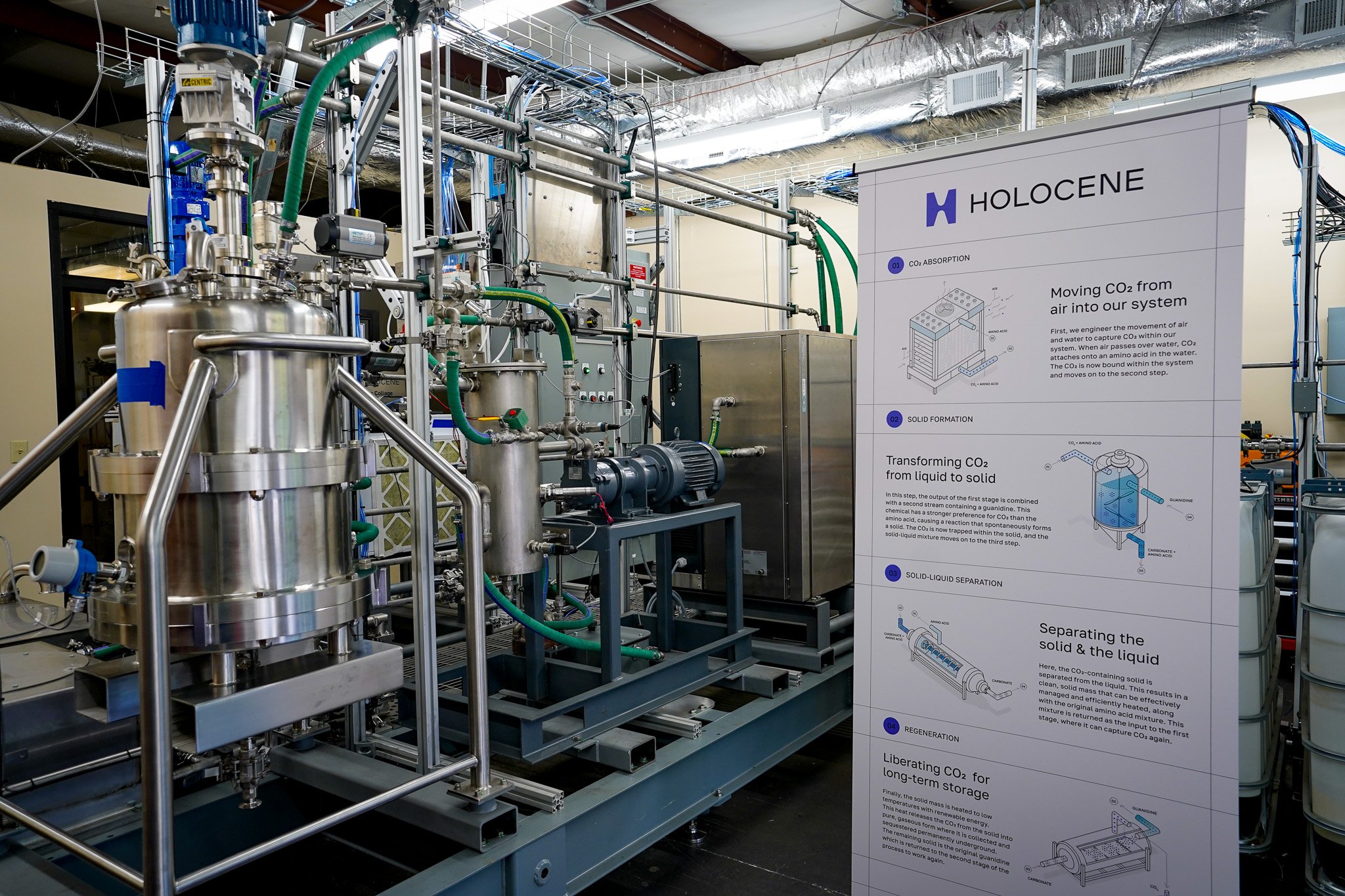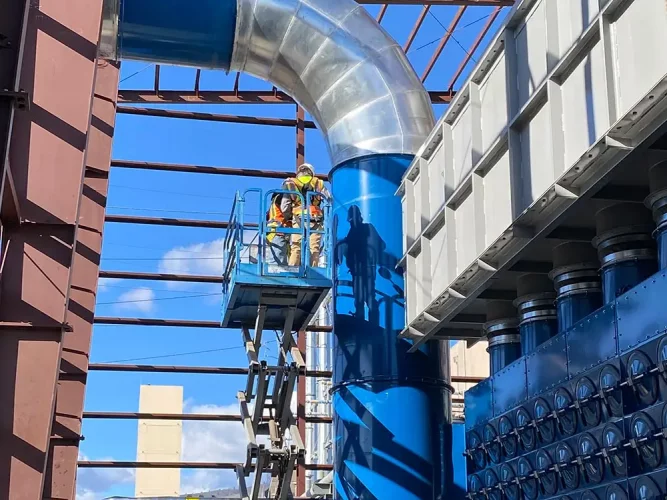
In a move that could reshape the future of carbon removal technology, Google has announced a groundbreaking partnership with Holocene, a startup focused on removing CO2 from the atmosphere. This collaboration marks a significant moment for both companies as they strive to lower the cost of carbon capture to $100 per ton—a key target for making these technologies commercially viable.

This deal is part of a growing trend among tech giants to address their own environmental impact, especially as they expand into energy-intensive sectors like AI. "Google just landed a deal to capture planet-heating pollution at a huge bargain: $100 per ton of CO2," writes Justine Calma, a senior science reporter covering energy and the environment. This partnership signals a shift in how companies are approaching the climate crisis, showing that carbon removal could become a central piece of the puzzle in mitigating climate change.
Holocene's Carbon Removal Technology
While Holocene may be new to the carbon removal scene, the company is making waves with its innovative approach. Founded in 2022, Holocene’s technique for capturing CO2 is built on research that Anca Timofte, co-founder and CEO of Holocene, encountered during her time at Stanford Business School. She discovered new chemistry for filtering CO2 at Oak Ridge National Laboratory, and this breakthrough laid the foundation for what Holocene uses today.
Holocene’s process revolves around a dual-loop chemical system. The first loop pulls CO2 out of the air using water and amino acids that attract carbon dioxide. Then, guanidine is introduced, which reacts with CO2 to form a solid crystal. This solid is later heated to release concentrated streams of CO2, ready for sequestration underground. Unlike competitors, which rely on a "cartridge" system where CO2 is absorbed and then released in separate stages, Holocene's technology allows for continuous operation. This efficiency is what could eventually bring the cost of carbon capture down to $100 per ton, a goal set by the U.S. Department of Energy (DOE).
"We think it’s a self-fulfilling prophecy. We need to all believe we can do it and work hard to do it," says Anca Timofte. She’s optimistic that this deal with Google will help push forward Holocene’s vision of making carbon removal affordable and scalable.

>> In Other News: Honeywell and Samsung E&A Plan Collaboration to Help Reduce Power Plant Emissions
Google’s Commitment to Climate Tech
Google is no stranger to environmental initiatives, but this partnership with Holocene marks a bold step forward in addressing its own carbon footprint. The company produced over 14.3 million metric tons of carbon dioxide pollution last year. With the race toward AI dominance, Google’s energy consumption is only expected to grow, making it even more critical for the company to invest in innovative solutions like carbon removal.
This agreement with Holocene commits Google to capturing 100,000 tons of CO2 by 2032. “It’ll pay startup Holocene to take CO2 out of the air at a bargain price,” remarks Justine Calma. The deal is valued at around $10 million, with a significant portion already paid up front to help Holocene scale its operations. The next step for the startup is to build a demonstration plant capable of capturing 5,000 tons of CO2 annually. Following that, the plan is to create a commercial facility that can sequester 500,000 tons per year.
Although Google's 100,000-ton goal is equivalent to taking 20,000 gas-powered cars off the road for a year, it’s still a small fraction of the company’s overall emissions. The tech giant’s carbon output continues to rise, which highlights the need for companies like Google to prioritize reducing their emissions alongside investing in removal technologies.
Holocene’s Growing Network of Backers
Holocene is not working in isolation. Since its inception, the startup has garnered support from some heavy hitters in the climate tech industry. Notably, it counts the U.S. Department of Energy (DOE), Elon Musk’s Xprize Carbon Removal, and Bill Gates’ Breakthrough Energy among its funders. This strong backing from both government and private sectors signals confidence in Holocene’s ability to make carbon removal a viable business model.
Before founding Holocene, Timofte and her fellow co-founder worked at Climeworks, one of the first companies in the carbon removal space. Climeworks operates the world’s largest commercial-scale carbon removal plants, including projects in Iceland, the U.S., and several other countries. Their current technology, while more established, is still considerably more expensive—costing between $250 and $350 per ton of CO2 captured. Holocene’s ability to potentially cut that cost down to $100 per ton could make it a game changer in the industry.
"Google has to and other partners have to come to the table to support projects like this," emphasizes Anca Timofte, underlining the need for large-scale investment to advance carbon removal technologies. If Holocene succeeds, it could help accelerate the deployment of carbon capture solutions that the world urgently needs.
The Future of Carbon Capture: Challenges and Opportunities
The deal between Google and Holocene comes at a time when the direct air capture (DAC) industry is still in its infancy. According to reports, only about 27 DAC plants are currently operational worldwide, with the collective capacity to capture around 10,000 metric tons of CO2 annually. To put that into perspective, global carbon emissions are measured in billions of tons each year.
Holocene’s pilot plant in Knoxville, Tennessee, currently captures a modest 10 tons of CO2 per year. However, with the funding from Google and other backers, the startup is poised to scale quickly. Its ambition is to become one of the leading players in the field, capable of significantly contributing to global carbon removal targets.
Still, there are challenges ahead. Carbon removal is often seen as a “last resort” solution, with critics arguing that it could delay more essential actions like reducing emissions at the source. Experts also caution that carbon removal technology alone cannot solve the climate crisis. As Justine Calma points out, “Carbon removal is no cure-all for climate change,” and more aggressive steps must be taken to transition away from fossil fuels.
A New Chapter for Google and Holocene
The collaboration between Google and Holocene marks a promising step forward in the quest to reduce global carbon emissions. While the agreement is still in its early stages, the potential impact is clear. If Holocene can scale its technology and lower the cost of carbon removal, it could set a new standard for how companies like Google address their carbon footprints.
In the end, the success of this partnership will depend not just on technological innovation but on the collective efforts of governments, corporations, and startups to make carbon removal a widespread, cost-effective solution.
Subscribe to the newsletter
Daily decarbonization data and news delivered to your inbox
Follow the money flow of climate, technology, and energy investments to uncover new opportunities and jobs.
Latest issues
-
This $475M Indiana Plant Turns Petcoke Into Clean Fuel
Inside This Issue 🏗️ This $475M Indiana Plant Turns Petcoke Into Clean Fuel 🏛️ Buckeye Gives Final Support to Rezone Nikola Property for Hydrogen Huba 🧪 CHARBONE Secures its First Order for Clean ...
-
Florida Just Made Hydrogen History With This First
Inside This Issue ⚡️ Florida Just Made Hydrogen History With This First 🏗️ KBR Awarded FEED for Coastal Bend LNG Project 🌱 Grassroots Carbon Becomes First U.S. Company to Deliver 1.9 Million Tons ...
-
How Duke Energy Just Made Hydrogen History
Inside This Issue 💧 Duke Energy Florida Unveils Nation's First System Capable Of Producing, Storing And Combusting 100% Green Hydrogen ✈️ Technip Energies’ Hummingbird Technology Powers LanzaJet’s...
Company Announcements
-
ENGLEWOOD, Colo., Jan. 14, 2026 -- Gevo, Inc. (NASDAQ: GEVO), a leader in renewable fuels and chemicals, as well as carbon management, today announced that it has been awarded U.S. Patent No. 12,48...
-
Frontier Signs Two Pre-Purchase Carbon Removal Deals With Pronoe And Cella
The Meta and Google-backed consortium committed a combined $3.05m to the companies Frontier, a carbon-buying consortium backed by Meta and Google, has signed two pre-purchase agreements totaling $...
-
January 14, 2026 [Biofuels International] - SkyNRG Americas is pleased to announce a major milestone for Project Wigeon, its planned sustainable aviation fuel (SAF) facility in Eastern Washington. ...
-
CHARBONE Secures its First Order for Clean UHP Hydrogen from a US Customer in NY State
Brossard, Quebec, January 14, 2026 – CHARBONE CORPORATION (TSXV: CH; OTCQB: CHHYF; FSE: K47) (“CHARBONE” or the “Company”), a North American producer and distributor specializing in clean Ultra Hig...